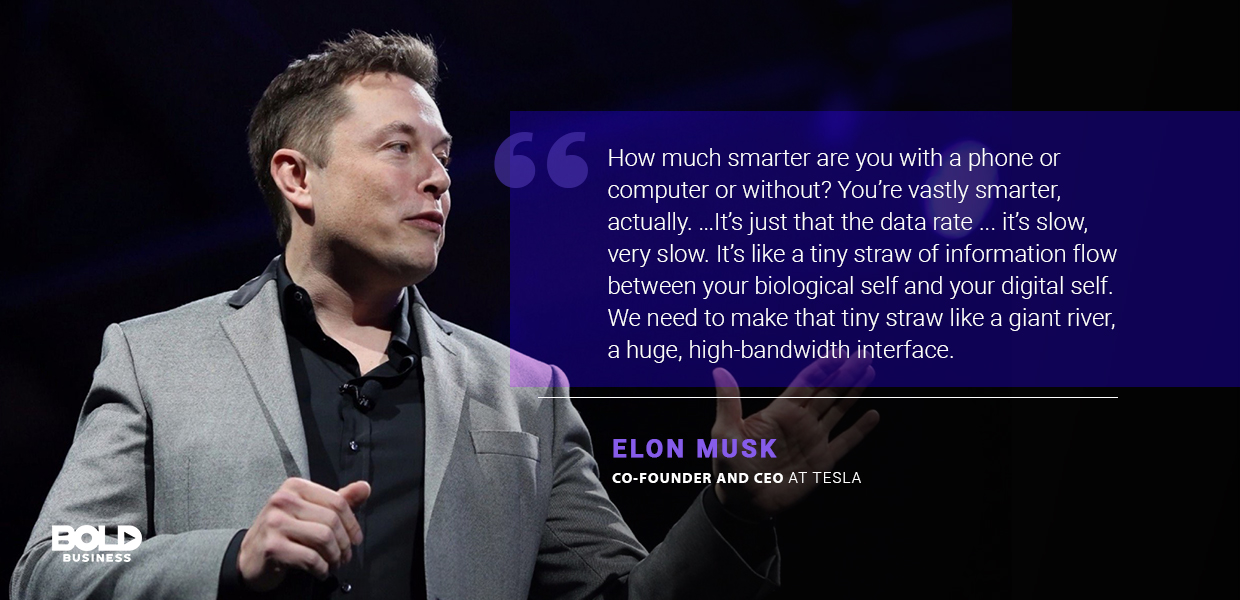Remember movies like ‘The Matrix’, or ‘Total Recall’. where humans were able to interact with computers without using a keyboard and mouse but merely utilizing their brains.
All they need was some eletrodes to be inserted in the skull which can recieve the signals from your brain (specifically from neurons). It looked something like this.

However, from movies when we come to real life, the question you probably pondering about is- is it really possible in real life?
This collaboration between a device (machine) and the brain is known as the brain-machine interface. To give any command to a computer we need to use a keyboard and cursor, here keyboard and cursor are the mediators between us and the computer. What if we can run a computer without using our fingers (no keyboard or mouse). Sounds cool! isn’t it?
But how brain-machine interface work?
We all know our brain is the most important organ we have. we can’t see, hear, taste, and feel until our brain process the corresponding information.
Our eyes are merely a tool for receiving visual information, it’s the brain that ultimately receives the information and processes the visual information via visual cortex.
We can move because the brain sends signals via the central nervous system to the muscles of the body. All our interaction like speaking, shaking hands requires precise communication between the brain and muscles of our body.
In case, if this communication is get disrupted then we called it paralysis in medical terms. The brain is the ultimate processor of everything we do.
Brain cells (neurons) communicate with each other by sending and receiving small electrical signals. Now it’s possible to catch these electrical signals with electrical sensors.
In brain-computer interface (BMI) an electrode that contains many electricals sensors is attached to the brain via the skull. Now, these sensors catch the brain signals and using a receiver one can detect and convert to a command to operate a device.
Using BMI we can understand a paralyzed person’s intent, whether he wants to talk, move, add or anything else.
Nonetheless, the current technology of BMI is not very practical. There are several reasons for that. Often one needs to implant the electrodes on the scalp via surgery, which is quite expensive and can be dangerous.
In the current technology, the number of electrical sensors present in the electrodes are not much in number (10 at best) due to their not enough small size. Due to the lesser number of sensors, they can’t catch the brain signals precisely. Moreover, no one wants to carry a heavy electrode on their head, it looks weird, isn’t it?

Pedram Mohseni, a professor at Case Western Reserve University, and his scientific partner, Randolph Nudo of Kansas University Medical Center created their own start-up company with the name Neuralink in 2011.
Their aim was to develop a device that might help people with brain injuries. But later they sold it to Elon Musk in 2016 (in $100 million). This was when Neuralink caught people’s attention.
Right after Elon Musk became main investor at Neuralink and launched it in 2016, it has generated a storm of hype in the world. Of course, there are reasons for that. In just 2-3 years the kind of achievements this company has accomplished is just amazing.
So how exactly Neuralink can take the brain-machine interface to the next level?
It has already solved or I would say resolved a lot of limitations brain-machine interface earlier had. The first one is about electrodes, which I already discussed above.
Scientists in Neuralink has created a chip (electrode) called N1 sensor (4 millimeter in size), which contains 1024 tiny electrical sensors in small threads, which are thinner than a human hair (because we need really small sensors, which was earlier not developed).

With current technology one can implant at best 10 electrical sensors in the brain but Neuralink’s electrical sensors are so tiny (4 to 6 μm in width) that one can implant more than 10000 sensors without hampering anything in the brain. Imagine the kind of signals these many sensors can catch!
But how these electrical sensors will be implanted within the brain?
Developing tiny sensors is one thing but implanting them inside the brain without hampering any brain activity itself is a significant challenge.
To conquer this,the team at Neuralink has developed a robot that can do the job with accuracy. This robot will implant those threads precisely in the brain without affecting any blood vessels within. Have a look at the video below-
These threads will then catch the neuron signals send it to the N1 sensor (which is the tiny processor implanted in the brain) and with the help of a transmitter placed just beside the air we can decode the signal.

The most advantageous thing in this technology is that unlike other brain-machine technologies, it’s not one-dimensional but two-dimensional. Not only we can get the output from the brain, but we can also send input to the brain via the tiny threads.
All these developments in Neuralink I have discussed so far have been done in just 2 years. They are progressing at a lightning speed.
The technology is yet to be tested on humans, it has been successfully applied to mice and monkeys. The company said humans trials will be done by 2020.
If successful, brain-machine interface will reach a new level. It will surely revolutionize medical science. Especially the paralyzed people who can not talk, walk, move and people who lost their legs or hands will benefit immensely. They will be able to do things probably with much better speed and precision than normal humans do.
But wait, the story doesn’t end here. The ultimate ambition of the brain-machine interface is not just to benefit paralyzed people but to take the human race to an advanced level.
An advanced level where we can communicate with machines smoothly, where things we do will be much faster, accurate, and effective, where biological and artificial intelligence will merge to generate superintelligent humans.
The potential of this technology is limitless. We cannot even imagine at this point. We can download any information in our brain without even moving any part of our body. We can do things just using the sheer power of our amazing brain.
Elon Musk and many others have time and again talked about threats from artificial intelligence (AI) in the near future. If this technology of Neuralink becomes successful, then this will be our way to prevent AI apocalypse.
With such astonishing potentials there comes some dark sides of this technology also.
What about people’s privacy? Do you think there would be any privacy?
What if someone hacks our brain?
These are some ethical questions we need to answer before such technologies become feasible.
Humans are meant to evolve, to become better with time. Every new technology comes with some dark side depending upon the user (be it antibiotics or atom bombs).
Science and technology will continue to expand whether someone likes it or not. But with every advanced technology comes an advanced threat. What we can do is to make sure to minimize the effect of its threats.
We must remember the famous quote written by Stan Lee–
“With great power comes great responsibility”
You must be thinking about how fascinating our brain really is. It’s indeed one of the most mysterious things in the world. We have come so far to understand how our world works. We know a little bit even about the birth of the universe how it expands but ironically we barely know anything about our brain using which we think all these.
I remember the lines Prof. Jeff Litchman (from Harvard University) tells his students every time he teaches them about the brain-
“If everything you need to know about the brain is a mile, how far have we walked in this mile?”
Prof. Litchman said we have walked merely three inches. That little we understand our fascinating brain.
What do you think about this? How much do you know about the brain?
Let me know in the comment section.

Have a wonderful week. Until next time.
-Joy
Source:
